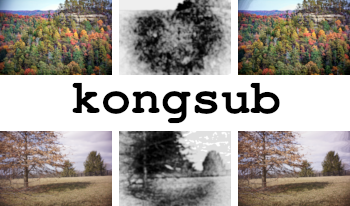
Many lenses have significantly poorer sharpness in the corners of the image than they have at the center due to optical defects such as coma, astigmatism, and field curvature. In some circumstances, such a blur is not problematic. It could even be beneficial by helping to isolate the subject from the background. However, if there exists similar content in the scene that is not blurry, as happens commonly in landscapes or other scenes that have large textured regions, this type of defect can be extremely undesirable. The current work suggests that, in problematic circumstances where there exists visually similar sharp content, it should be possible to use that sharp content to synthesize detail to enhance the defectively blurry areas by overpainting. The new process is conceptually very similar to inpainting, but is overpainting in the same sense that the term is used in art restoration: it is attempting to enhance the underlying image by creating new content that is congruous with details seen in similar, uncorrupted, portions of the image. The kongsub (Kentucky’s cONGruity SUBstitution) software tool was created to explore this new approach. The algorithms used and various examples are presented, leading to a preliminary evaluation of the merits of this approach. The most obvious limitation is that this approach does not sharpen blurry regions for which there is no similar sharp content in the image.

We describe a novel method for monocular view synthesis. The goal of our work is to create a visually pleasing set of horizontally spaced views based on a single image. This can be applied in view synthesis for virtual reality and glasses-free 3D displays. Previous methods produce realistic results on images that show a clear distinction between a foreground object and the background. We aim to create novel views in more general, crowded scenes in which there is no clear distinction. Our main contributions are a computationally efficient method for realistic occlusion inpainting and blending, especially in complex scenes. Our method can be effectively applied to any image, which is shown both qualitatively and quantitatively on a large dataset of stereo images. Our method performs natural disocclusion inpainting and maintains the shape and edge quality of foreground objects.